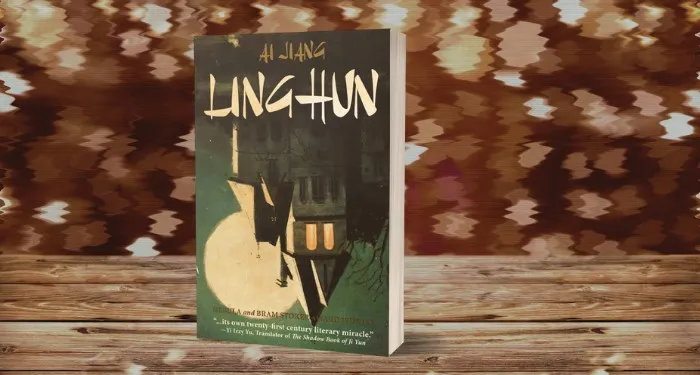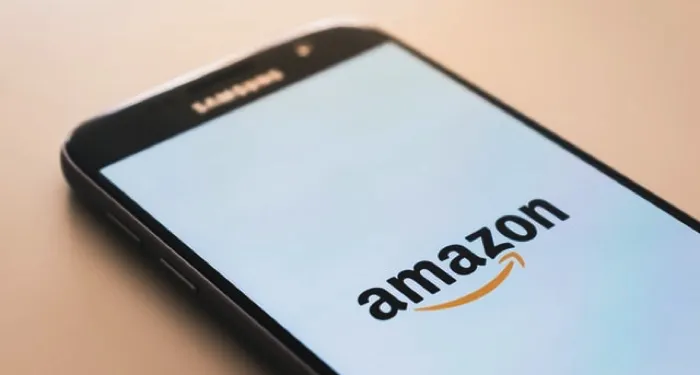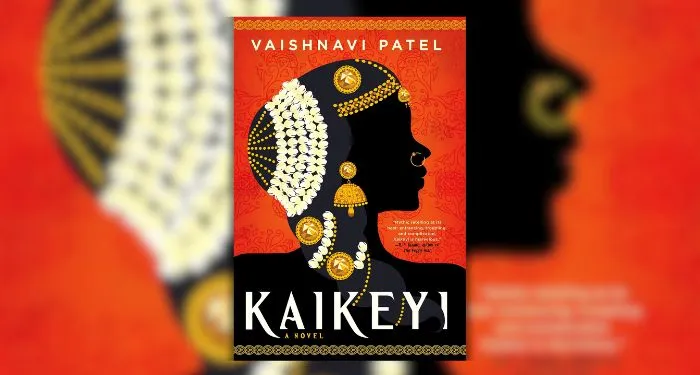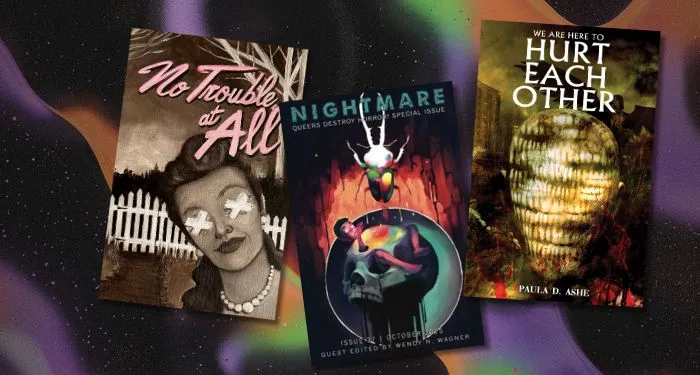Kelly is a former librarian and a long-time blogger at STACKED. She's the editor/author of (DON'T) CALL ME CRAZY: 33 VOICES START THE CONVERSATION ABOUT MENTAL HEALTH and the editor/author of HERE WE ARE: FEMINISM FOR THE REAL WORLD. Her next book, BODY TALK, will publish in Fall 2020. Follow her on Instagram @heykellyjensen.
Book banners don’t ban books. That’s what they’ve said for years, utilizing terms like “curating,” “reviewing,” and “removing” to describe their acts of intentionally getting rid of books they don’t like from library collections. They claim they’re not banning books because kids can get the books being “curated” from the school libraries at the public libraries or at bookstores.
Of course, what happens at the school library then makes its way to the public library. The same people banning school library books set their sights then on public libraries, then onward to bookstores and the materials available on retail sites. Those same people, then and now, are active and engaged in changing the law at the state and federal levels to prohibit access to materials they deem “inappropriate.” This includes working to chip away not only at the standardized Miller Test that determines whether material is considered obscene, but also at the First Amendment rights of children, teenagers, and every adult across the country.
If you’ve spent any time learning about book censorship over the last four and a half years, none of this is new.
Parallel to the public book banning is the quieter level of banning. Quiet/soft/self censorship thrives in sociopolitical and sociocultural conditions like those we’re in right now. When you create laws or merely threaten to cause difficulty for someone trying to do their job, many professionals become more cautious about the work that they’re more than qualified, trained, and experienced in doing. Quiet censorship appears as a library worker choosing not to purchase materials for a collection out of concern that someone might not like them. Removing materials without justification or choosing not to pursue justification are among other acts of quiet/soft/self/ silent censorship. That’s not to mention those professionals who agree with the censorship and choose not to purchase or decide to remove those materials. Quiet/soft/self censorship happens both on the frontlines and in administration.
Perhaps, though, the convergence of both out-loud book banning and quiet book censorship is this: the banning of discussion around banned books altogether.
Literary Activism
News you can use plus tips and tools for the fight against censorship and other bookish activism!
This year’s Banned Books Week, held from October 5 to 11, was never about celebrating the damage being done to our constitutional rights; since its inception, the week-long event has been about raising awareness about the threats to our constitutional rights. But in ways that are baffling even to folks who’ve been working in this arena for decades, 2025’s Banned Books Week brought not only further lies and misinformation about what’s happening in public institutions nationwide. It also brought with it censorship of discussing the issue at all.
In 2025, we saw more bans on Banned Books Week than in any recorded memory. Thanks to the library workers who participated in an anonymous survey distributed throughout October, we have some insight into what was — and what was not — permitted as a means of raising awareness of book censorship.
To be clear, “ban” in the context of banning Banned Books Week is used to describe the intentional removal or change of the week from how it once was. Some libraries have never highlighted Banned Books Week. Those are not considered “bans” on the week. Libraries that have run Banned Books Week displays, programming, or other events in the past but’ve intentionally elected not to this year are being discussed.
 This might be one of my favorite Banned Books Week displays ever, and it so perfectly captures what it means that books are banned right now. The display is by librarian Rachel Haider at Eagan High School (MN). The saran wrap shows that you can see the books, but you’re unable to access them without having some privilege–in this case, scissors, physical strength, time to find the end, etc.
This might be one of my favorite Banned Books Week displays ever, and it so perfectly captures what it means that books are banned right now. The display is by librarian Rachel Haider at Eagan High School (MN). The saran wrap shows that you can see the books, but you’re unable to access them without having some privilege–in this case, scissors, physical strength, time to find the end, etc.Bans on Banned Books Week took two different flavors this year. One was about reframing what the week is about during an era when trying to change the language around book censorship is difficult, if not impossible. The other was about banning discussion altogether, whatever framework was used to describe what was happening.
Freedom to Read vs. Banned Books Week
What to call this week-long campaign to raise awareness around book censorship has been under debate for years. For some, “Banned Books Week” has a negative connotation, and it can lead to confusion for library users who see displays featuring banned books and wonder why their own library would ban a particular book. Some see the framing of “Intellectual Freedom Week” or “Freedom to Read Week” as more positive (and thus, more celebratory). While there’s nothing inherently wrong with electing a different method for highlighting library censorship, the methods used and the reasons for its rebranding matter. It takes time and effort to change the language around this week effectively.
One of the biggest Banned Books Week stories this year came from the state of Hawaii, where Banned Books Week was banned across the state. The Hawaiʻi State Public Library System issued new guidelines, changing the week-long awareness-raising campaign around book censorship from Banned Books Week to Freedom to Read Week. Again, this rebrand isn’t uncommon. The way it was rolled out to libraries in Hawaii, however, was: words and imagery connected to the week were banned. The 51 public libraries statewide could not use the words “banned” or “censored.” They could not use the phrase “Banned Books Week.” They could not create displays with caution tape or fake flames, nor could they even reference the materials produced and distributed by the American Library Association (recall that disallowing association with the largest professional association for library workers is increasingly common as part of the greater attacks on the field itself).
There are errors in this story, which first reported on the banning of Banned Books Week in Hawaii, including the claim that “book banning has existed for 100 years in the United States.” Book banning began even before the United States had a Constitution (see Thomas Morton’s New English Canaan, and, if we’re going on a technicality here, the widespread banning of Uncle Tom’s Cabin before, during, and after the Reconstruction era). That aside, the story sheds light on what’s a clear divide between those working the frontlines of librarianship and those working in offices removed from them. The state librarian’s comment that the new language is less confusing is, well, confusing. Equally befuddling is the prohibition of anything not aligned with that framing. Library workers were made to feel ashamed and belittled for highlighting what has been happening in the country — and without advance notice. It’s also a perfect example of the type of top-down directive that undermines the autonomy of public libraries to serve their communities.
Two library workers outside of Hawaii also shared that this year’s Banned Books Week was rebranded as Freedom to Read Week in their institutions. In both cases, the decision to create displays and awareness around the “Freedom to Read” was done as a means of “toning down” the reality that books are being banned nationwide.
“In late August we were given the directive to refrain from using the phrase “banned books” in our displays to “keep things positive.” Our staff was very disturbed by this information, which was then reiterated by our branch managers,” explained one public library worker from Washington state. “This prompted a “clarification” email from our library director who long-windedly lectured us about our library values. We were told that Banned Books Week was not being banned, but that we should not use the phrase and also refrain from displaying any books that might “poke the bear.” In the same email, [the director] suggested we display Junie B. Jones, because “can you believe it was banned?” This was confusing and made many of us feel like we are now in the position to have to determine which books have been banned for ‘silly’ reasons and which would “poke the bear.”
At a public library in Oregon, the administration elected to forgo Banned Books Week this year, instead choosing to recast it as “Freedom to Read Week.” The decision came in order “to prevent scrutiny from the local community and public in general.” There was neither programming nor displays tied to book censorship that week in the library.
Banning Discussion, Displays, or Awareness of Book Censorship
Libraries are political. Any library still insisting libraries don’t talk about or engage with politics is writing its own obituaries. By virtue of being taxpayer-funded institutions, libraries are fundamentally political.
Too often, libraries conflate being political with being partisan. Public libraries are unabashedly pro-library, regardless of which party promotes pro-library policy and advocacy. To be non-political is to fail to understand what the hell a library even is.
Banned Books Week being banned by libraries is often conducted under the guise of being “apolitical.” It’s also done to stave off book banners or to avoid addressing the reality of librarianship in the 2020s with community members who may notice something and begin to ask questions. How libraries expect to survive or thrive when they’re unwilling to talk about the ongoing efforts to dismantle them is unclear. Public libraries and public school libraries will only survive if people are aware of their importance, so that community members can then show up to the polls and vote in support of these institutions.
Politics are exactly why libraries are under scrutiny right now. Elected officials have zero shame in implementing their own agenda based on conspiracy theory and partisan doctrine.
This year, a public academic library in Texas had its Banned Books Week display removed by the administration. The reason? “It may be in violation of SB17 in Texas.” According to what the library worker shared, the administration made it clear that, under the state’s law, any cultural or heritage celebrations are prohibited, including Banned Books Week. This style of compliance in advance is precisely what lawmakers who passed the sweeping bill hoped for, and they’re getting it.
Counter this example with another public academic library in Texas, where a library worker shared that they were supported by the administration in holding several events during Banned Books Week this year. “I volunteered for it because I am all about the right to read. I created a larger-than-usual display featuring classics and current removals. I got the ALA poster and bookmarks. All went well! I am extending it for the full month and including Prison Banned Books week.” They included several other programs that they’re running related to book censorship and Texas legislation, noting, “I am happy to be still working and deeply appreciate the support of my boss and co-workers. We have to be brave.”
Public K-12 schools and public libraries were subject to the most Banned Books Week censorship, too. Here’s a rundown of some of their experiences this year:
- A week before Banned Books Week, a public library system in South Carolina received an email notice that all displays and programs related to the week were canceled. The decision was made by the library board chair and communicated to the library director. It is a library where the board is currently rewriting collection policies to suit their political interests.
- A Kansas City, Missouri, area library worker noted that the week before Banned Books Week, they were informed that no displays were allowed that mixed titles from various age ranges (i.e., no children’s books displayed with teen books or teen books displayed with adult books). This did not impact their Banned Books Week displays this year, but it came in response to some patron complaints about queer and Pride-themed books. Displays about Pride and queer history month are already banned from the library. These decisions came from “Headquarters and/or board members who are a combination of members who personally do not like queer or banned books, members who show obedience in advance to threats from public or government pressure, and members who would rather try to appease hateful individual customers rather than uphold library values on censorship and intellectual freedom.”
- A last-minute memo at a public library in Connecticut directed library workers not to post about Banned Books Week on any social media. The library worker shared that it was most likely related to pushback from the city, not the library itself. Both Pride and Black History Month celebrations have also had to be scaled back over the last few years. “Since I have worked here ([several] years), we have been at the forefront for stocking banned books and championing them, so this comes as a shock and a disappointment at the moment.”
- “We were directed not to have any displays that have the potential to bring negative attention to the library or cause the community to complain. This was not directly targeting Banned Books, but focused on Black History Month and Pride Month. Staff chose not to do Banned Books Week programs or displays to comply with this overall directive,” wrote a public library worker in Virginia. The library has dealt with challenges previously, choosing to relocate two books previously in the teen section to the adult section (one of those titles was Gender Queer, so its relocation to the adult section doesn’t constitute book censorship, as it was published for adult readers; the second relocated book was referenced by author name alone).
- At an in-person meeting, multiple branches of a large public library system in Georgia were asked not to participate in any activities for Banned Books Week. The mandate came from the Director, who did not want their library “singled out” for highlighting banned books. The library worker who shared this information noted that the directive may have come from county commissioners.
- Another public library in South Carolina saw Banned Books Week banned for them on October 1, just days before it was to launch. This wasn’t a huge surprise, given that the library has seen the board clamp down on other week-long and month-long events, and that the library itself has been not-so-slowly dismantling its young adult sections. “Supposedly for staff safety, but our board is made up of pro-banning folks,” wrote the library worker. The librarian added that the board chair would be approving all celebrations going forward and not to expect Pride month to happen. This public library, although not mandated by South Carolina law to remove books that the State Board of Education demands be removed from public school libraries, has taken the liberty of relocating all of those books to the adult section. This is still book censorship.
- Banned book displays are prohibited at a public library system in Colorado due to the board’s ban on all displays of a celebratory nature. Even book displays related to colors are banned in this library because “that would open a door to rainbow displays, which are unofficially banned due to the book banners on our library board kicking up a fuss over a non-LGBT rainbow display in the new books section.” The library worker emphasized how bad the culture is in their library, which has been forced to make several decisions based on the demands of their county library board, members of whom are appointed by an unfriendly commissioner. “The situation in our library district is really dire. Clothing and behavioral bans for staff have been discussed, including any items with rainbows, pronoun pins, and “lifestyle decisions” with which the board members disagree. There’s a very real brain drain and skill loss in the district as a result, leaving the few who remain feeling trapped by their circumstances, including masking their queer identities. Everyone who can is already making plans to leave. We are not safe. We are scared. We are not free to help those who come to us asking for resources.”
- A different library worker sent a report from the same public library in Colorado mentioned above. All displays, mentions, and acknowledgements of Banned Books Week are prohibited.
- A public school librarian in California was informed by the school superintendent that discussing Banned Books Week was inappropriate. This began with a librarian wearing a shirt that said, “I Read Banned Books.”
- At a public library in Tennessee, the administration was informed by the county’s human resources department that displaying information about Banned Books would put a target on the library’s back. This report came from an administrator who has chosen to keep Banned Books Week and Pride displays more discreet and has put in the effort to ensure that those books remain on shelves, period. ” I hate it, but I also need to keep my staff and my family safe,” they wrote. “The fact that I’m [continuing] to put ‘controversial’ books in the collection is risky. I keep the number for the local ACLU on my desk in case it goes bad. A display isn’t the highest priority as long as I can keep the books available for my patrons.” They hope to see these displays become more visible in the future.
- A librarian from a Florida public library noted that they hold a Banned Books Week display every year and that this year, they planned one with an interactive element. “The planned display had an emphasis on the freedom to read and utilized giveaway materials from the ALA with this year’s “Censorship is So 1984″ theme as prizes for the interactive element. The display was cancelled by my library director the week before I was set to assemble it.” The reason? The director cited the current political climate and did not want to call attention to the library’s diverse materials. “Florida has the dubious distinction of having the most bans enacted this year out of any state. There is a chilling effect and a culture of fear because of it.”
- A public school library in Michigan was forced to cancel plans for its Banned Books Display a week before it was set to go up. The principal and superintendent made that call for political reasons, and it applied to all schools across the district.
- “This crack down is hard, but banned books [week] is like library pride week and it hurts the most,” wrote an Ohio public library worker, whose director canceled their Banned Books Week display (and all heritage-themed displays) earlier this year as a result of the “political landscape.”
The average library user isn’t reading about the assault on libraries, nor are they aware of book censorship and its impact in their own community. That’s a fact, whether it’s rampant or hasn’t yet reached their library. The erasure of Banned Books Week displays is a form of censorship, and it’s one more way that libraries are hindering their own survival.
As is pretty damn clear in the instances above, politics are alive and well in libraries. They’re just not the politics that are going to protect these institutions of democracy.
It’s also pretty damn clear how loud this “quiet” censorship really is. It mirrors the same “quiet” banning of Pride in libraries that we’ve seen since the rise of far-right attacks on public institutions.
Book Censorship News: October 31, 2025
- The La Grange School Board (TX) debated in their meeting about the book Butt or Face, and one board member showcasing how much they know about children, asks why such a book would be in the school library.
- North Little Rock School District (AR) hid several LGBTQ+ books from the school’s digital book platform.
- A North Woods school library assistant (MN) was fired from their job following a banned books display.
- Wisconsin MassResistance is trying to get several books banned from Hales Corners Public Library.
- How Book Bans Control Information and Why They Backfire.
- Remember how New Braunfels Independent School District (TX) closed their libraries so they could go in and ban books? They’ve apparently reopened this week and have pulled over 80 books for further review. Those books are banned until they’re back on shelves. The titles under review are the ones being targeted regularly. Also, you’ll see this happening in other Texas schools because, like the leadership at New Braunfels claimed, “their hands are tied.” That’s PRECISELY what legislators in the state wanted, even when they said things like this would never happen.
- “Why is banning or removing books such a big deal? The banning or removal of books is particularly consequential because it diminishes the diversity of perspectives available in American libraries and educational institutions. Such actions undermine the “marketplace of ideas,” a foundational theory of freedom of expression, protected under the First Amendment, which assumes that the free exchange of competing viewpoints is essential to discovering truth and fostering a vibrant democratic society.” This is a great read.
- A right wing newspaper in Minnesota is fomenting about an elementary school talking about banned books week and sharing a picture book about gay people to talk about why books are being banned. This link won’t give them traffic and it’s worth reading to see how these stories are framed to rile up the base over something completely harmless.
- A great column about how we need to protect the First Amendment and the freedom of speech the same way we see people defending the Second Amendment. It’s centered on the fight over books, over student press, and over speech in Indiana.
- “According to campaign finance reports on Cy-Fair ISD’s website, the board’s nine candidates have already raised $83,614 in donations, with three candidates raising more than $10,000 each and two raising more than $20,000.” School board elections in Texas are underway and they’re bringing big bucks from PACs eager to keep these boards stuffed with right-wing candidates. Related, here’s Frank Strong’s guide to the Texas school board elections for those in the state who haven’t yet voted. You’ve got a few more days.
- Brooklyn Public Library’s “Books Unbanned” program just reached ONE MILLION checkouts.
- Huntington Beach, California’s, city council voted to appeal the the ruling that they must unsegregate books from the public library (a thing that voters wanted). They’re so hell bent on pushing their conservative little minds on everyone that they’ll ignore the thing they claim to be representing: the community.
- A breakdown of the books, curriculum, and film that have been banned in Iowa’s public schools, due to their legislation.
- “A recent analysis of dozens of Pennsylvania school boards found one in five of them have adopted culture war policies that censor material, ban books or target LGBTQ+ students. ” First, they’re not culture wars when it is a tiny fraction of “the culture” creating the war. Second, that tiny fraction of “the culture” is having undue influence in public school policies.
- Wyoming’s chapter of the ACLU is coming out swinging against the drafted legislation that would essentially kill young adult sections in public school and public libraries. Let’s hope there’s a lawsuit brewing.
- Publishers Weekly explores whether or not the Supreme Court will take up the public library book banning case out of the Fifth Circuit in the next session (see here).
- New Mexico is preparing to introduce anti-book ban legislation again this session.
- Though it has not been formally introduced, it wouldn’t be surprising to see a second shot taken to pass anti-book ban legislation in Michigan.
- It’s absolutely crucial to show up and vote in support of your libraries. Why? Because people who are being brainwashed by disinformation and propaganda about the books available in public libraries are. Here’s what’s happening in Jefferson County, Ohio, which has a levy measure on the ballot.
- Two authors who’ve had their work targeted in Alabama talk about the state’s coercion tactics to continue revoking access to LGBTQ+ books in libraries statewide.
- Cameron Samuels, a high school student in Texas, talks about one of the Texas ballot measures, Proposition 15, and how it would hurt student rights in education.
- Despite all of the fomenting, turns out there was no actual problem with books across the state of North Dakota requiring an absurd law. More stories like this, please, which call out how book banners only care about a thing to score political points.
- Marion County Schools (IN) offer up their stage for students at Mississinewa High School to use for the play that their school canceled. “Picoult said one parent’s complaint about a non-binary character in the “Between the Lines” book led to MHS’ cancellation of the students’ performances. Picoult added that, while the character is present in the book, the character is not part of the play MHS was planning to put on.”
- This story is paywalled, but South Hadley Library (MA) is getting backlash from bigots who are mad there is a Pride club being held there. Blah blah blah, taxpayer money. Just say you don’t like gay people and move on because that’s all it is.
- Oconee County library (GA) won’t be relocating the children’s picture book My Rainbow out of the children’s area. “Nicholas Bennett had challenged the book, saying his 5-year-old daughter “does not need to learn about transitioning genders at her age.” Bennett said he had not read the book and had discovered the book by asking a librarian for it.” In other words, he had some kind of list and didn’t actually care about the book but about deciding who could access it.
- Texas school districts are turning to AI to ban books. This is the dream of those legislators who implemented these laws–they LOVE AI.
- Russia’s banned one of the largest anime databases in the country. Why? “Extremist LGBTQ+ content.”
- This week, a board member for the Citrus County Public Library (FL) proposed that they use the money no longer being used for the library’s BookPage magazine subscription to create a public memorial to Charlie Kirk. If you don’t think libraries should be political but think it’s okay for a board member to be so blatantly political, yikes. The board meeting actually debated this in seriousness, but ultimately rejected it.
- The first reader to do a Drag Queen Story Hour is now the Drag Laureate of San Francisco. A great story here!
- Here’s a far-right group to put on your radar as among the next to coordinate book banning campaigns. This link will not give their page views. Many of their marching orders look like they’ll come from Take Back the Classroom (written about here and worth an update about).



















 English (US) ·
English (US) ·